The morning sun painted Catania in gold as I wandered into the fish market near the Duomo. The sea’s scent hung heavy in the air, mixing with the shouts of vendors and the weight of centuries.
This wasn’t just a spot to grab dinner—it’s where I found the real heart of Sicilian food.
Walking through Catania’s ancient fish market, I realized that Sicilian food isn’t about fancy tricks or rare ingredients. It’s about honoring what’s fresh, local, and handled with care.
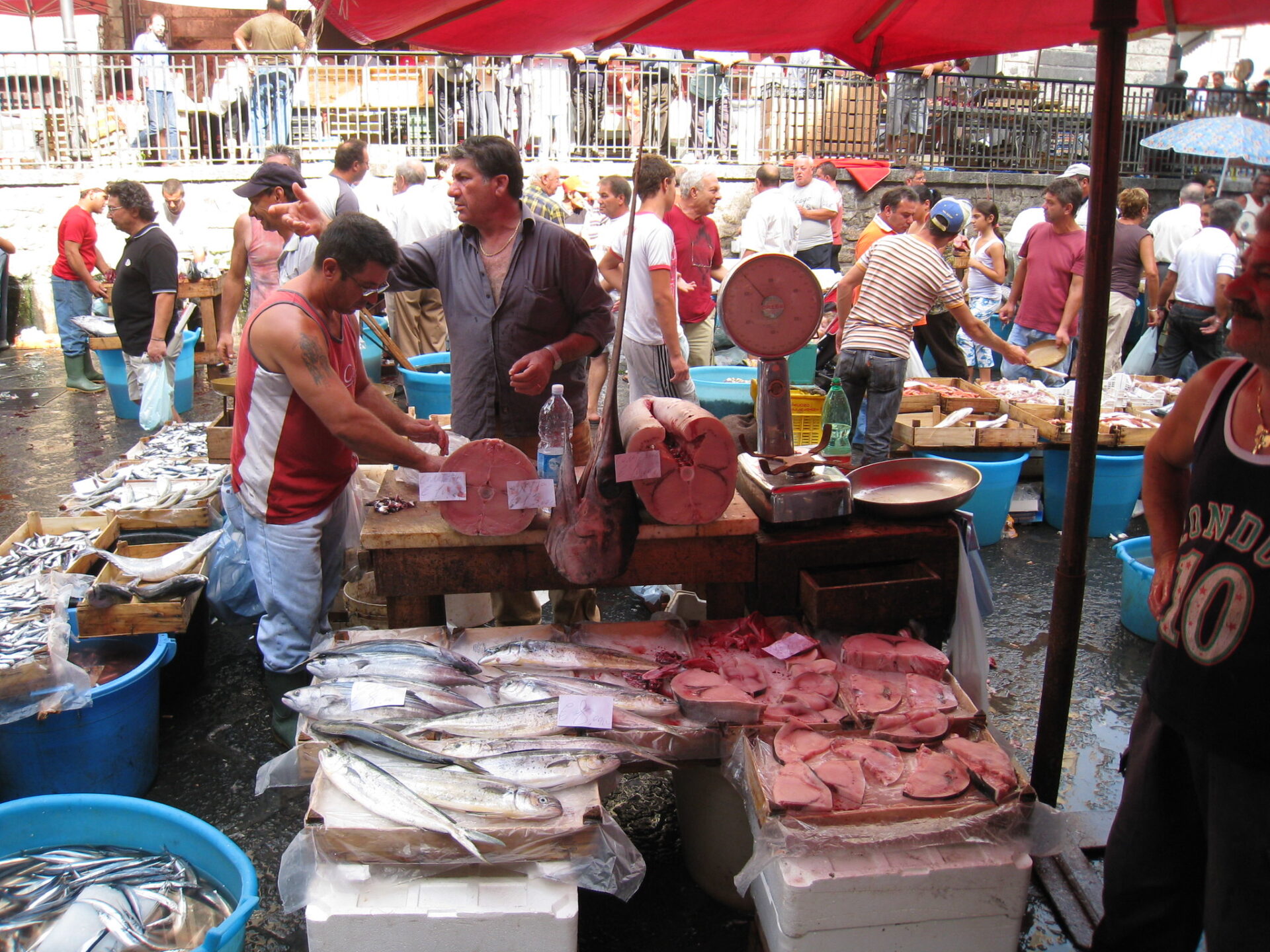
The market, as old as the city itself, feeds both families and famous chefs. Every morning, they crowd in to pick the day’s best catch, haggling with a passion that never seems to fade.
What was supposed to be a quick visit turned into a crash course in Sicilian food culture. I watched restaurant owners pick sea urchins and swordfish, elderly women inspect sardines like seasoned pros, and vendors beam with pride over their displays.
Even though the market now sells more than just seafood, it still feels like the heart of Catania—loud, real, and stubbornly unchanged.
Discovering the Vibrant Fish Market of Catania
Catania’s fish market sits right at the center of Sicilian food tradition, offering a peek into centuries of maritime heritage with Mount Etna looming in the background.
Here, the daily ritual of buying and selling seafood ties everyone to the real soul of Sicily.
A Sensory Journey Through the Market
Stepping into Catania’s historic fish market feels like entering a museum that’s alive with noise and smells. Fishmongers start setting up before dawn.
By 7 AM, the narrow aisles buzz with life.
My senses went into overdrive. Vendors shouted “Frutti di mare freschissimi!” while Mediterranean fish sparkled in the morning light.
Swordfish with their dramatic bills, ruby tuna, and silvery sardines all vied for attention.

The market isn’t only about fish. Stalls overflow with produce from Mount Etna’s rich soil—blood oranges, eggplants, and fragrant herbs that find their way into local recipes.
What really amazed me was how the market still runs as it did ages ago, even with modern Sicily outside its doors. The traders’ wild gestures and quick Sicilian chatter give the place a character you’ll never get at a supermarket.
Meeting Local Vendors and Artisans
The best part of the market? The people. Many vendors are third or fourth-generation fishmongers, inheriting their spots from family.
Giuseppe, his hands marked by years at sea, taught me how to spot the best octopus. “Clear eyes, firm skin,” he said, cleaning one with practiced skill.
Nearby, Maria set out her family’s catch with almost artistic care. Locals trust her sea urchin prep without question.
These folks don’t just sell—they advise. Ask for a recipe, and you’ll get a passionate answer, maybe even a demonstration.
I noticed they treat regulars differently than tourists. Locals get friendly teasing and maybe a hidden gem. Visitors like me get patient explanations and, sometimes, a taste of something special.
Traditions Passed Down Through Generations
Catania’s fish market is more than a place to shop. It’s a living museum of Sicilian culture.
Fishing methods here trace back to ancient Greek settlers. Many vendors stick to family traditions, fishing sustainably and respecting the sea’s rhythms.
I watched a vendor slice a huge tuna into perfect cuts using nothing but a battered knife. It looked effortless but clearly took years to master.
Knowledge flows freely. An older woman next to me shared her grandmother’s pasta con le sarde recipe when she saw me eyeing the fresh sardines.

These habits spill out into the city. Nearby restaurants serve dishes made with the morning’s catch, recipes unchanged for generations.
The market starts a chain of food experiences that define what it means to eat in Sicily.
The Living Soul of Sicilian Cuisine
Exploring Catania’s fish market showed me how deeply food shapes Sicily’s identity. The island’s cuisine tells a story of conquest, adaptation, and the power of tradition that stretches back thousands of years.
Influence of Diverse Cultures on Local Flavors
The flavors at the market didn’t just appear out of nowhere. Sicily sits at the Mediterranean’s crossroads, so its food carries marks from almost every big civilization.
Arabs brought citrus, rice, and sugar, changing Sicilian sweets forever. I tasted that history in candied oranges and almond pastries.
Greeks introduced olives and wine-making. Phoenicians set up trade routes that still shape what you find at the market.
Spanish rulers brought tomatoes and chocolate from the New World. Even now, I see vendors arranging their goods in ways that echo Norman traditions.
All these influences blend into a cuisine that’s less about strict recipes and more about making the most of what’s around.
Seasonal Ingredients and Family Recipes
In the market, I realized Sicilians shop differently than I do. They don’t stick to lists; they buy what looks freshest.
Seasonal eating isn’t a new thing here—it’s just the way it’s always been. Spring means artichokes and fava beans. Summer brings eggplants and tomatoes that put supermarket versions to shame.
Family recipes? They’re rarely written down. Instead, people pass them on by cooking together.
I saw kids with grandparents, learning how to pick the best fish just by watching.
The tastiest antipasti I had were simple: sun-dried tomatoes, olives cured in sea salt, and caponata from market eggplants. Each family tweaks these dishes in their own way.
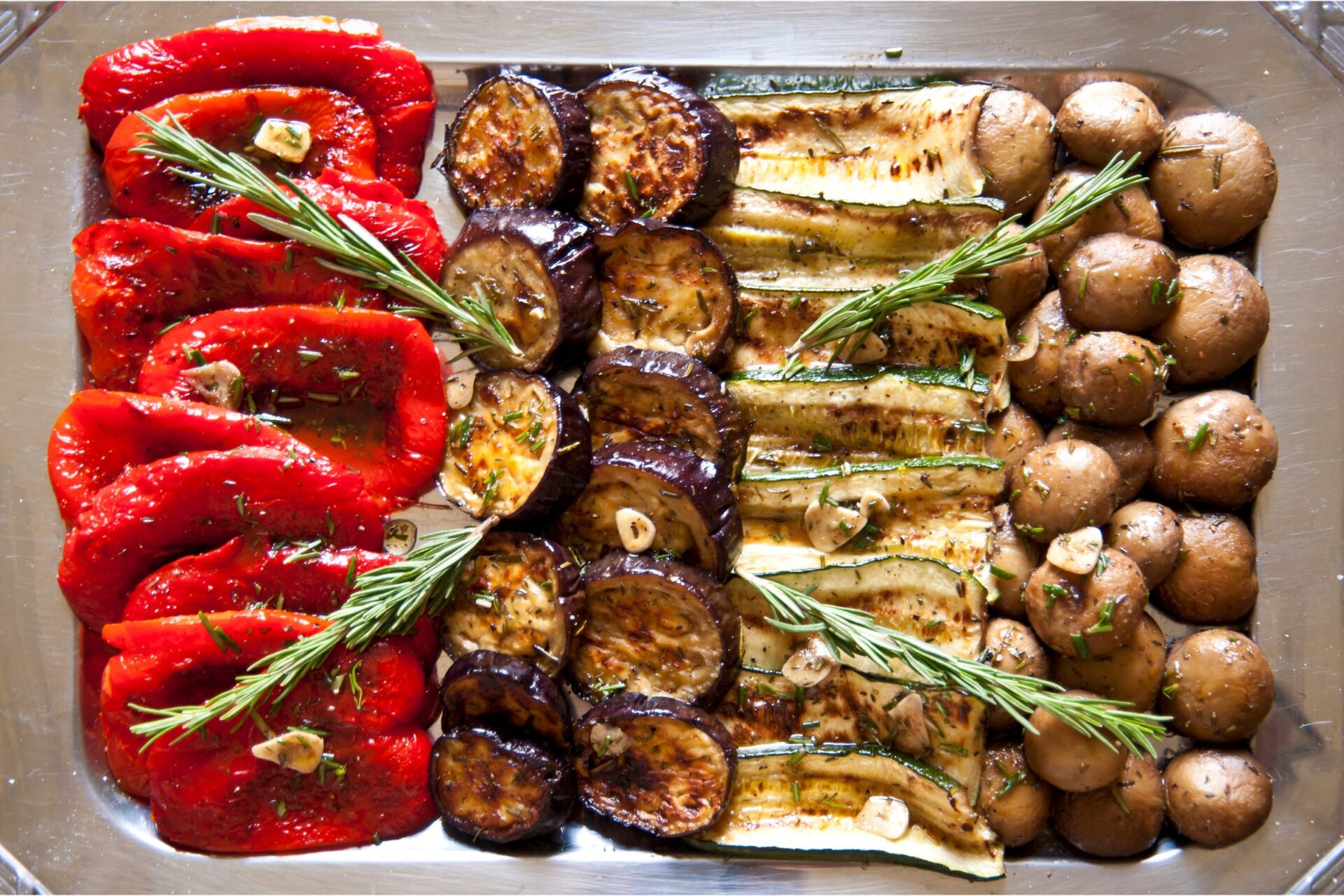
The Role of Seafood in Everyday Meals
Catania’s fish market pulses with energy and shows how central seafood is to Sicilian life.
Unlike some places where seafood is a treat, here it’s the backbone of daily meals.
Fishermen roll in before sunrise, and soon after, chefs and home cooks pack the stalls. Restaurants don’t bother with set menus for fish—they just serve whatever came in that morning.
The cooking is straightforward. Grilled swordfish with lemon, pasta with sardines and wild fennel, or raw sea urchin eaten right there—these dishes let the ingredients shine.
What really surprised me? Sicilians use every bit of the fish, making stock from heads and bones to avoid waste.
From Ancient Traditions to Modern Tables
The techniques I saw at Catania’s market haven’t changed much over the centuries. Vendors still call out their goods in voices that echo through the streets.

Salt-preserving, a Roman legacy, is still key here. I watched older fishmongers salt anchovies the same way their ancestors did.
Younger chefs show up too, looking for ways to put a modern spin on old favorites without losing the essence.
Still, the connection between land, sea, and table remains. Even now, Sicilians treat their food heritage with a kind of reverence I found moving.
This market isn’t just for shopping—it’s where Sicilian food culture stays alive, day after day.
Connections Beyond the Plate: Community, Family, and Love
The Catania fish market offers more than seafood—it reveals how food weaves people together in Sicily.
Every transaction, every meal, becomes a thread in the social fabric that’s held the island together for generations.
Bonding with Locals and Their Stories
Catania’s vendors don’t just sell fish—they share their lives. One morning, Marco, a third-generation fishmonger, insisted I try his family’s swordfish recipe before buying anything.
“This is how my nonna did it for 60 years,” he said, gesturing with hands shaped by work and pride.
Soon, other shoppers joined in. An older woman said she’d been buying from Marco’s family since she was a child. Someone else jumped in with tips for picking the best sardines.
What started as shopping quickly turned into a mini community gathering. These moments aren’t rare here—they’re just how Sicilian life works. Strangers become friends over food and stories.
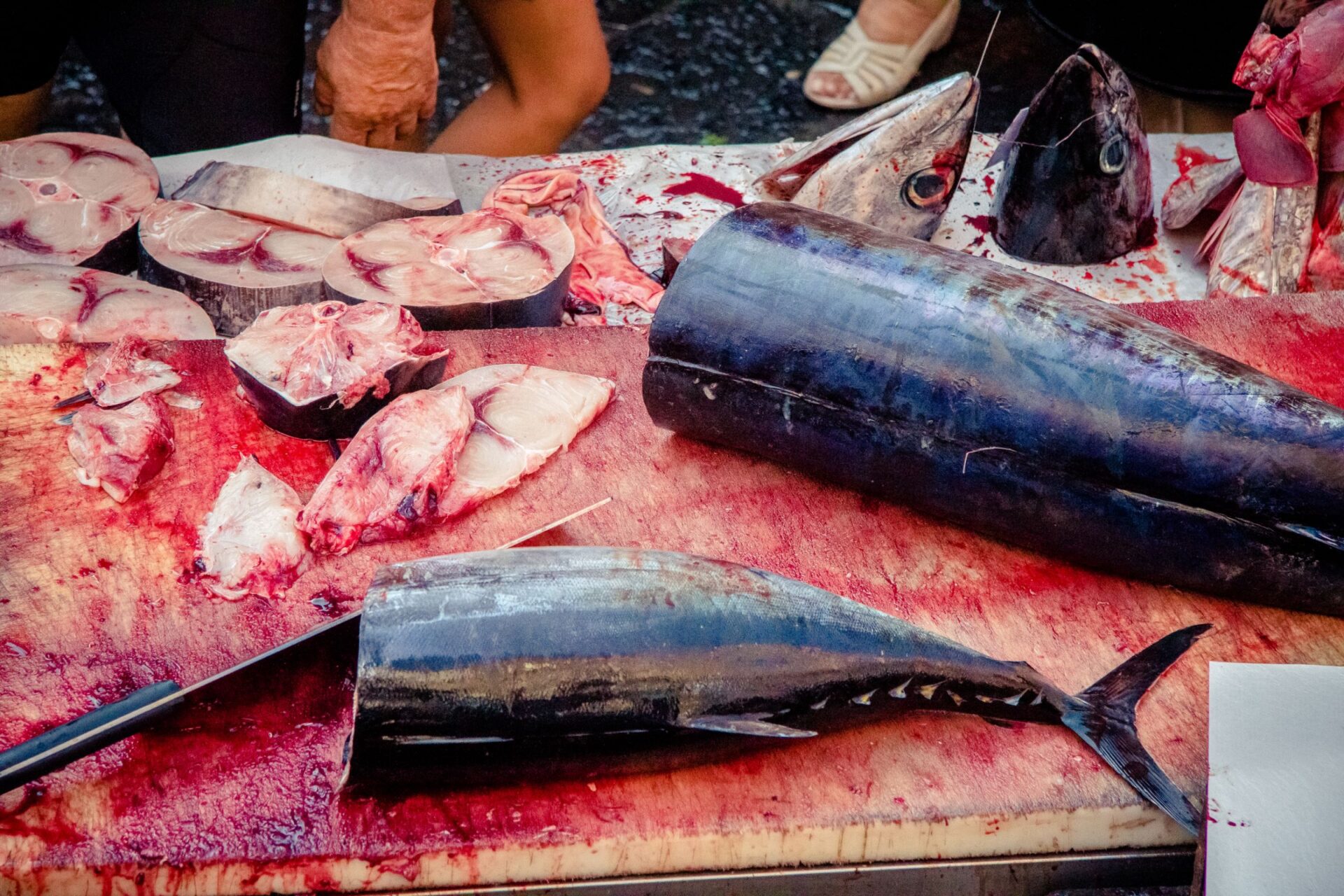
Meals as Expressions of Love and Tradition
In Sicily, cooking isn’t just about eating—it’s an act of love.
I felt this when Anna, whom I’d met at the market, invited me to dinner.
“Food is how we show we care,” she said, preparing a meal that warmed more than just my stomach.
Her husband poured wine from their own vineyard and told stories about harvests with neighbors.
The meal lasted for hours. Every dish came with a tale—her grandmother’s caponata survived the war, the pasta technique passed down for five generations.
Everyone took part. Kids set the table, teens learned from elders. Food wasn’t just fuel; it was a celebration of their shared past.
Cooking Together: Friends, Family, and Children
My sister joined me halfway through my trip, and we took a cooking class near the market. Maria, our instructor, made it clear: Sicilian cooking is never a solo act.
“In Sicily, we don’t cook alone. This is how we pass on our stories,” she said, showing us her family’s way of making pasta.
Three generations from one family learned together in our class.
Kids as young as six rolled arancini with determined little hands. A grandfather gently corrected his granddaughter’s anchovy-cleaning technique.

I watched recipes become more than steps—they turned into connections. Even as outsiders, my sister and I felt welcomed into this web of knowledge and affection.
The kitchen filled with laughter and chatter. Cooking became about making memories, not just food.
Exploring Catania and Surrounding Flavors
Outside the lively fish market, Catania offers a whole world of food and culture that shows off Sicily’s rich heritage.
The city’s volcanic backdrop and baroque buildings set the stage for food adventures that go way beyond seafood.
Via Etnea and Baroque Wonders
Walking down Via Etnea, Catania’s main street, I couldn’t take my eyes off Mount Etna in the distance. The street is lined with grand baroque buildings, rebuilt after the 1693 earthquake.
I ducked into a few tiny pasticcerias, sampling arancini stuffed with all sorts of fillings. The architecture here tells a story of survival—ornate churches and facades carved from volcanic stone.
What really struck me is how the food echoes this toughness. Dishes with local pistachios, capers, and wild herbs seem to draw strength from the volcanic soil, just like the city itself.
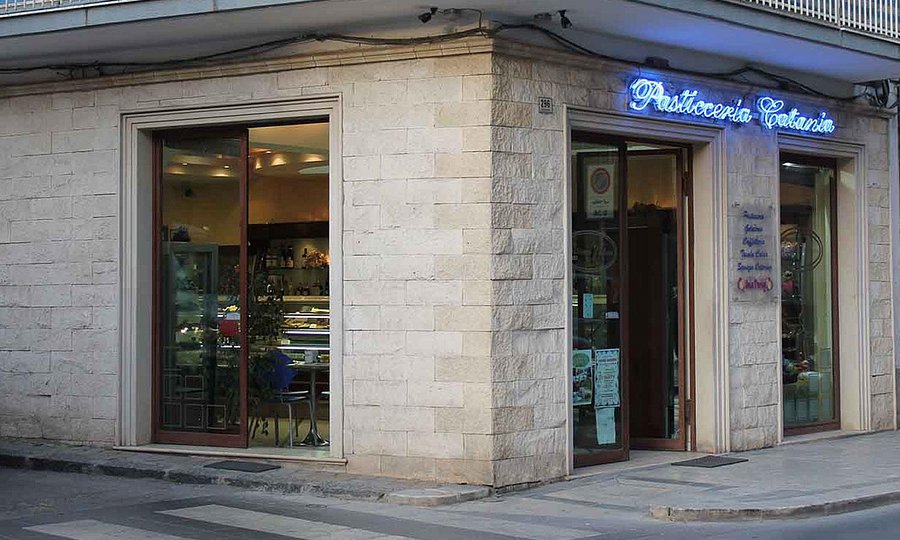
Image Source: Tripadvisor
Delicacies from Taormina, Erice, and Palermo
Leaving Catania, I saw how each Sicilian town puts its own spin on the island’s food. In Taormina, perched above the sea, I ate pasta con le sarde with a view I’ll never forget.
In medieval Erice, I watched pastry chefs craft cassata and marzipan fruits, following traditions that go back generations.
Palermo’s street food scene blew me away. I tried pani ca meusa (spleen sandwich) at Ballarò market and fell hard for sfincione, the thick Sicilian pizza piled high with tomatoes, onions, and breadcrumbs.
Gelato, Sacco, and Other Gourmet Treats
Sicilian gelato honestly deserves its own category of praise.
Northern Italian gelato just doesn’t compare—Sicilian gelato uses more fresh fruit and less cream, so the flavors hit with way more intensity.
I stumbled on the best gelato at this tiny shop near Castello Ursino. Their pistachio gelato looked green-brown (not that fake neon green), which told me they used real Bronte pistachios.
True Sicilian gelato should feel dense, not fluffy. I learned that the hard way after a few disappointing cones elsewhere.
For a real treat, I made my way to Sacco, a historic pasticceria. They filled my cannoli right in front of me—never pre-filled, thankfully!
The ricotta was just lightly sweet, dotted with chocolate chips, and the shell had that perfect crunch. These artisanal sweets really show off what Sicilian craftsmanship can do.

From Market to Table: Bringing Sicily Home
Sicilian markets taught me so much, and honestly, those lessons changed how I cook at home. You get flavors and tricks from locals—like Letizia, who opens her kitchen to visitors—that you just can’t pick up from a book.
Recreating Sicilian Dishes in New York
After wandering through Catania’s fish market, I felt determined to keep that seafood magic alive back in Brooklyn. Turns out, the simplest recipes usually shine brightest—just let the ingredients do their thing.
The first dish I tried was pasta con le sarde. I tracked down fennel and sardines at a tiny Italian market in Carroll Gardens. Okay, it wasn’t exactly like eating it in Sicily, but the smell alone took me right back.
Shopping seasonally has become my new normal, just like the Sicilians do. Winter means bitter greens for pasta, and when summer rolls around, I grab eggplants for caponata.
Now my friends always ask for my arancini at parties. Those crispy rice balls—first tasted near La Pescheria market—bring back memories of Catania’s noisy streets every single time.
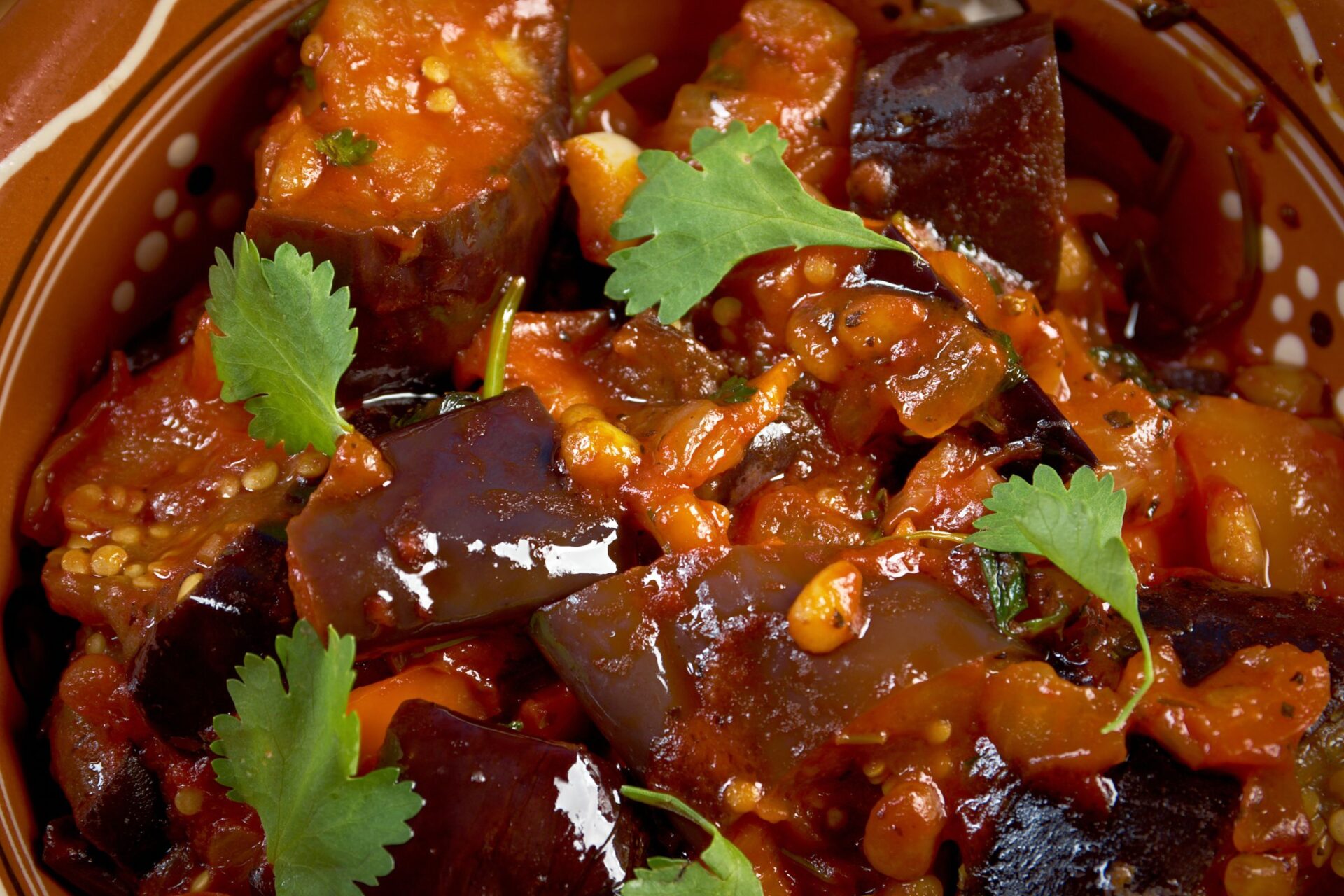
Italian Ingredients in Brooklyn and Campania
Brooklyn’s specialty shops have become my stand-in for Sicilian markets. Sometimes, Arthur Avenue in the Bronx gives me that same market buzz.
I buy Sicilian olive oil from a little importer in Williamsburg. He visits Campania twice a year, and that peppery finish just transforms even the simplest meal.
Sea salt from Trapani is a game changer for my cooking. It’s coarser than regular table salt and brings this unmistakable Mediterranean vibe.
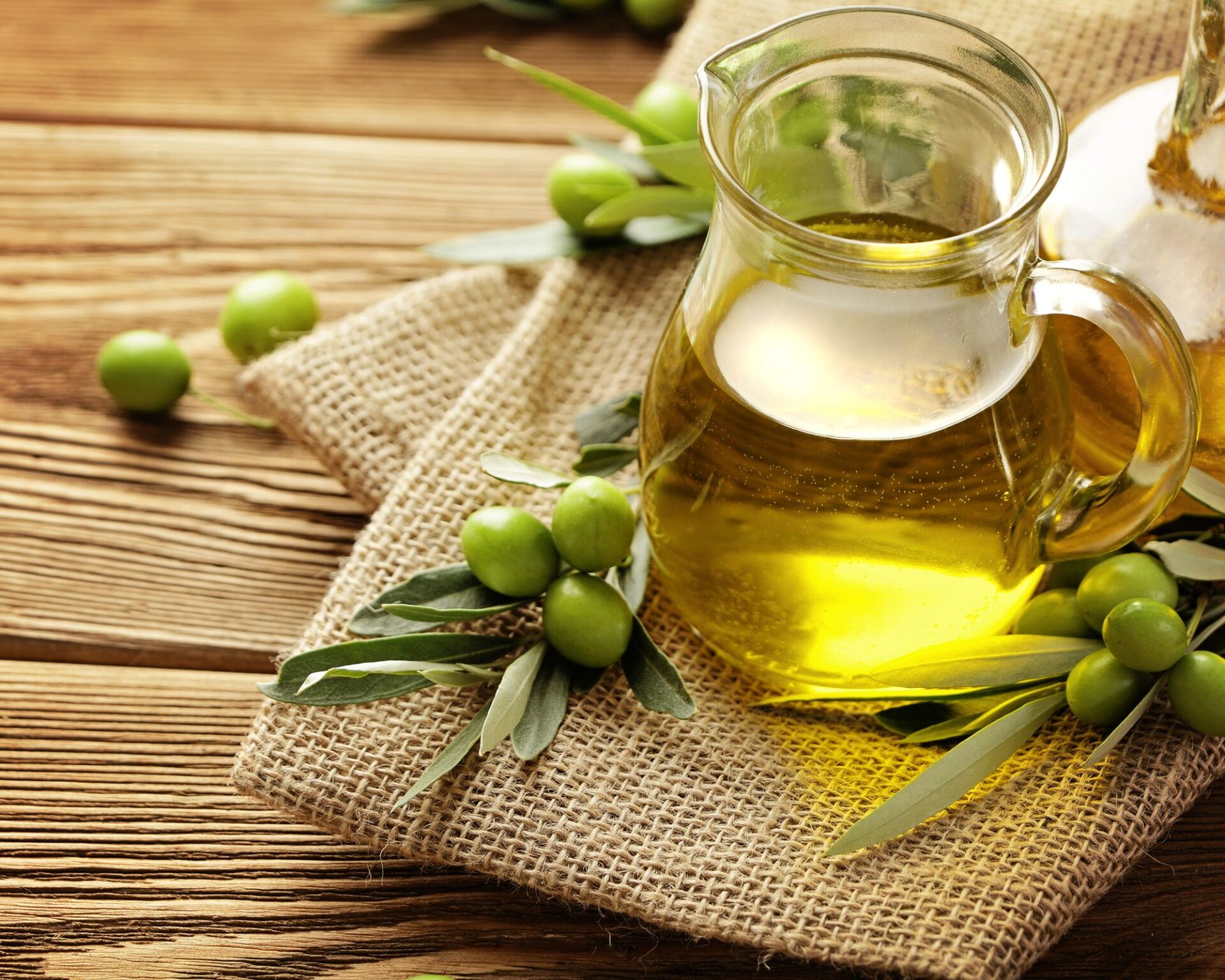
I get fresh ricotta from an Italian dairy in Bensonhurst. It’s almost as good as what I tasted in Sicily, especially with honey and pistachios for breakfast.
When I’m stuck and can’t find the real deal, I head to Eolo restaurant in Chelsea. The chef sources straight from southern Italy and Campania, so I never leave disappointed.
Honoring Heritage Through Every Meal
Every time I cook a Sicilian-inspired meal, it feels like a little celebration of where I come from. On Sundays, I host dinners where stories spill out as easily as the wine—just like the family meals I saw back in Sicily.
I stick to tradition by making seasonal dishes. For Easter, I make cassata. When Christmas rolls around, it’s buccellato.
These little rituals help me feel connected to something bigger. There’s a comfort in that.
Teaching friends to make fresh pasta has turned into one of my favorite routines. We crowd into my kitchen, laughing while flour sticks to our hands as we shape orecchiette and cavatelli.
I keep my grandmother’s old recipe cards close, now scribbled with notes from my own Sicilian cooking lessons. Mixing family history with new experiences just feels right, you know?
Honestly, what Sicily really taught me wasn’t just about cooking technique. It was about patience—letting good ingredients do their thing and actually taking the time to enjoy every bite.

